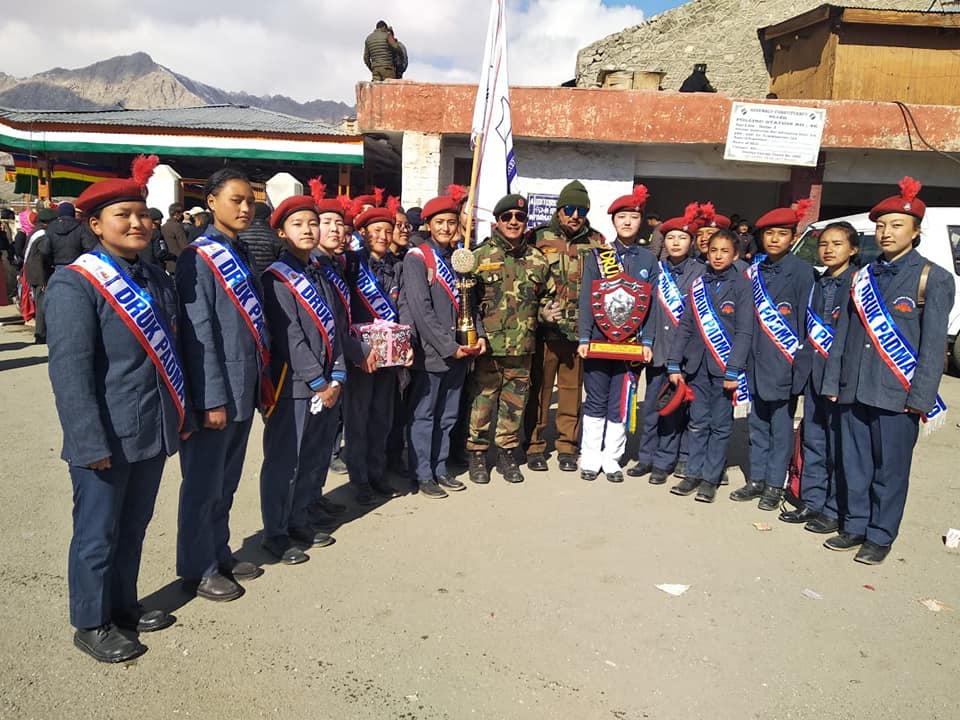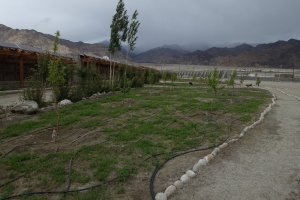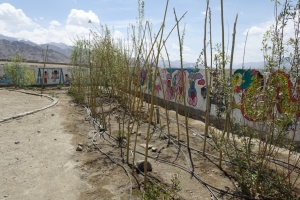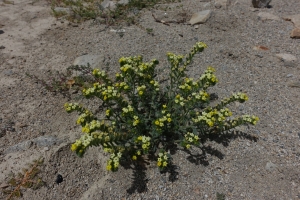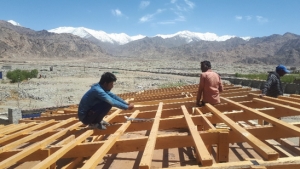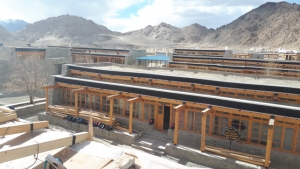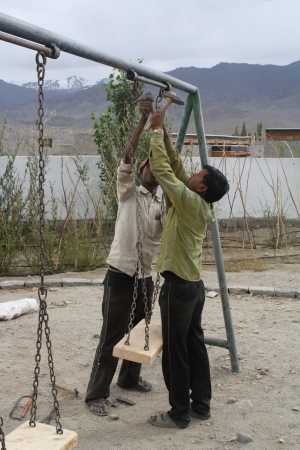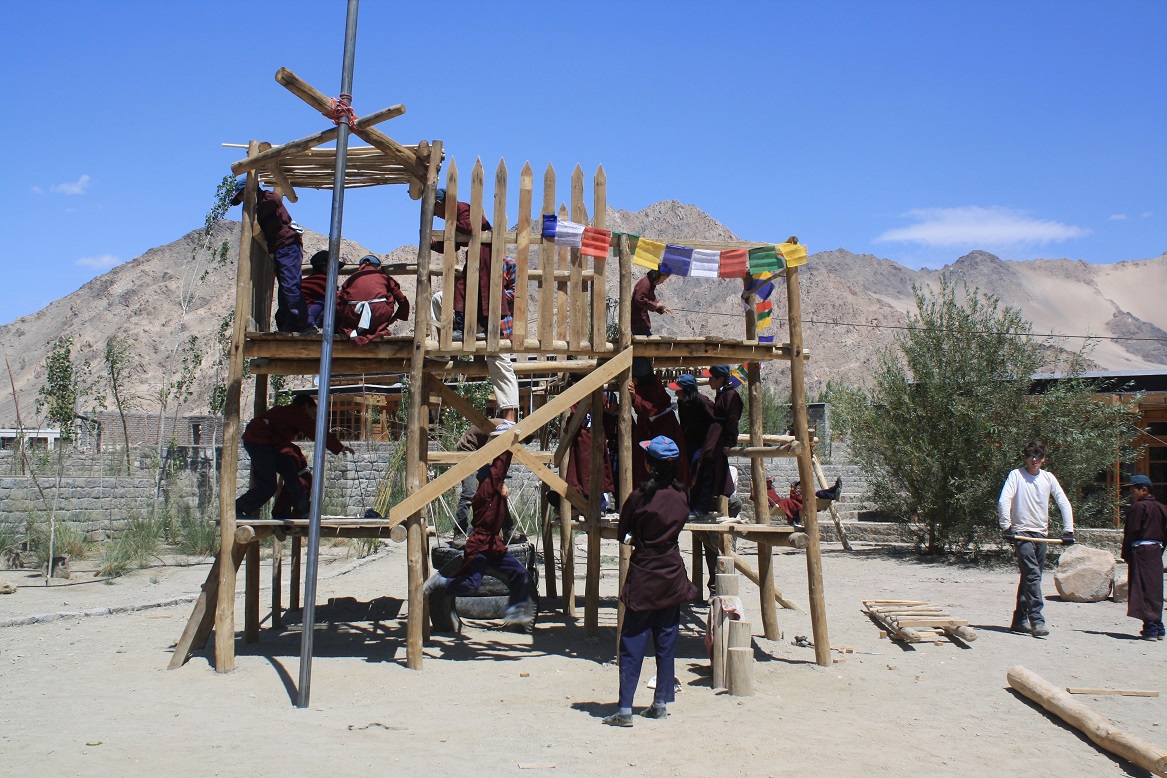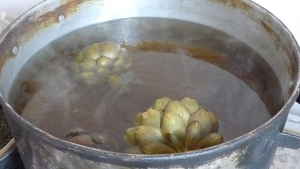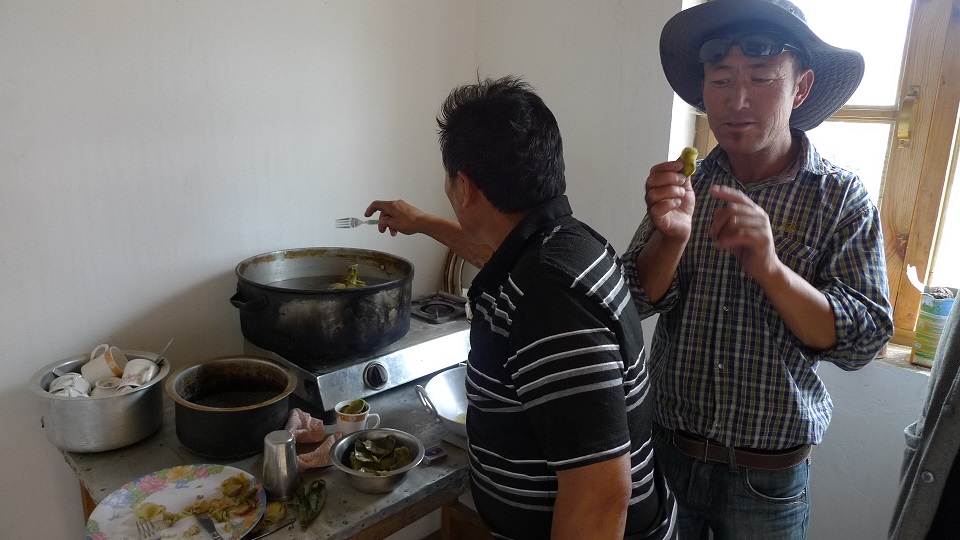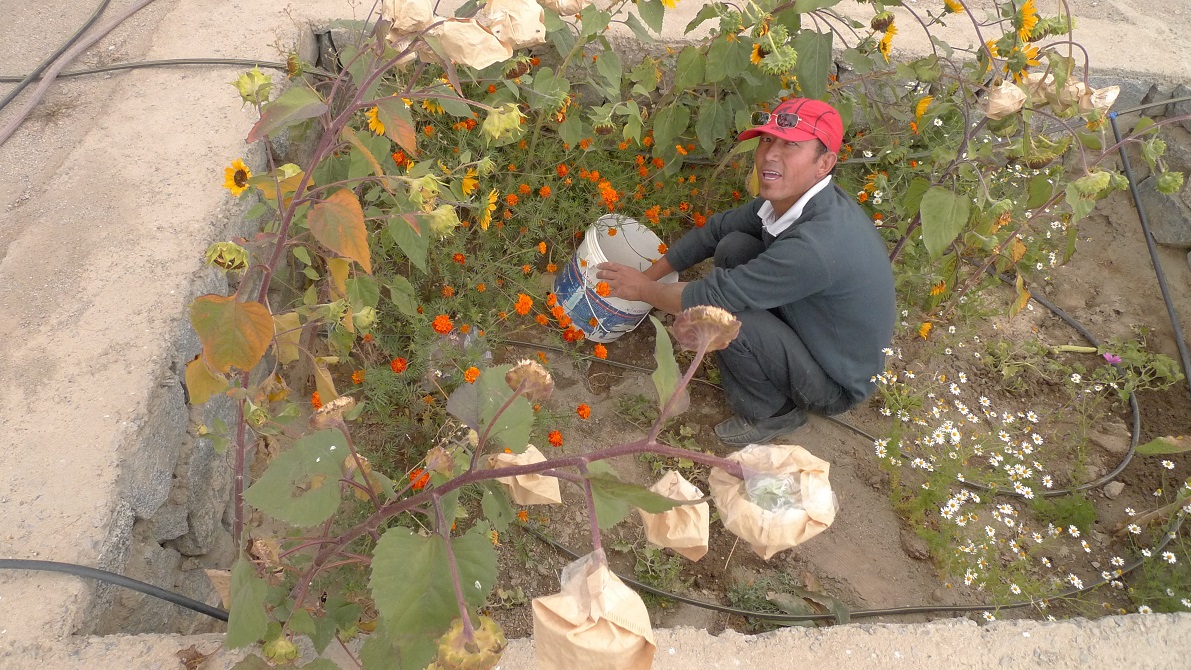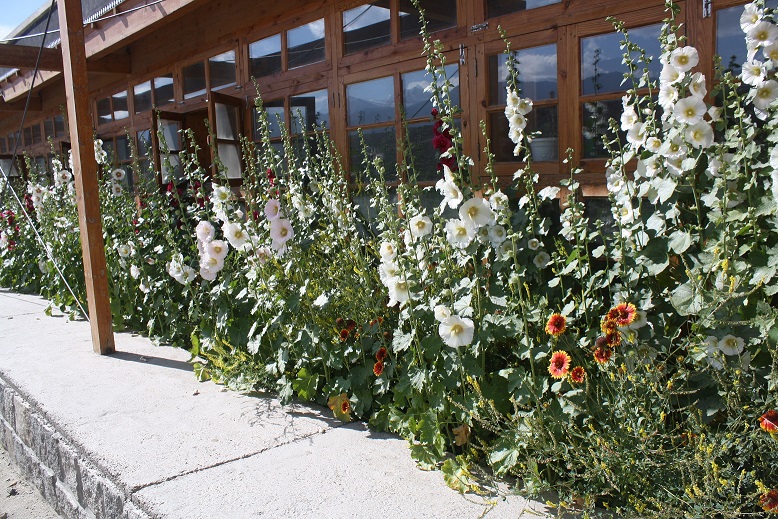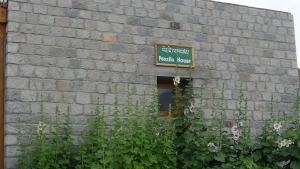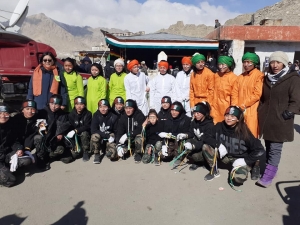Rachel Glynn
Green manure and compost
GREEN MANURE
The trees in the orchard area are doing well. The alfalfa even though small has already provided a green appearance in front of the administration buildings. The sowings in the bare areas that can have access to water have germinated in a week, rest of the areas can be sown next spring when we will have the sprinkler system installed.The alfalfa which has been sown as a green manure, to be cut before flowering and mixed in the soil, has a slow growth like most other seedlings due to the cooler than normal temperatures this season. Leaving it to grow and flower is another alternative with which the staff would be happier. Perhaps in time it can be turned into a wild flower meadow.
Nepeta floccosa growing between the irrigation and domestic tanks, it formed a line where it can get a little bit of run-off water.
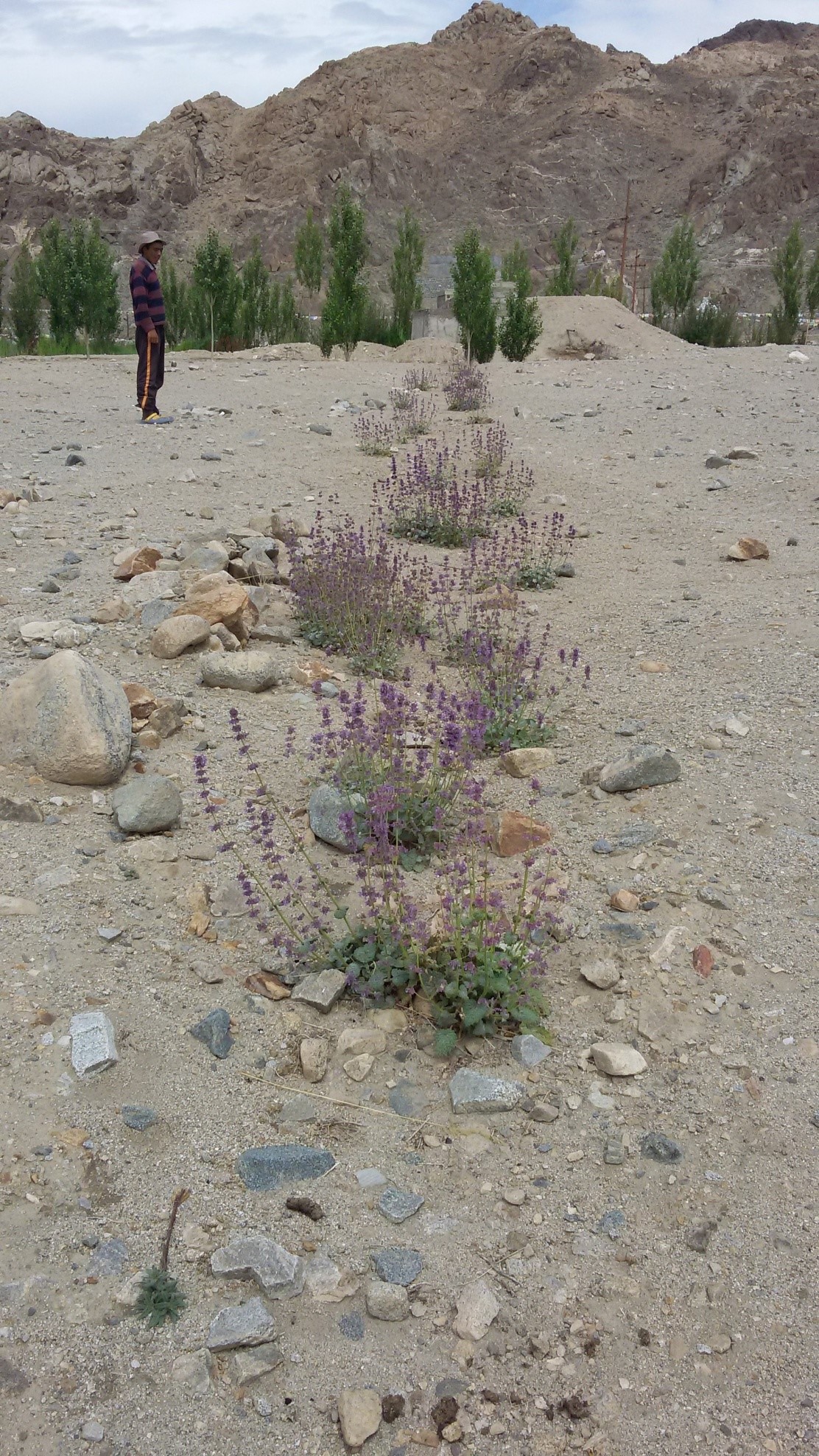
The wild chicory is blooming happily on the edge of the nursery beds and other dry areas.
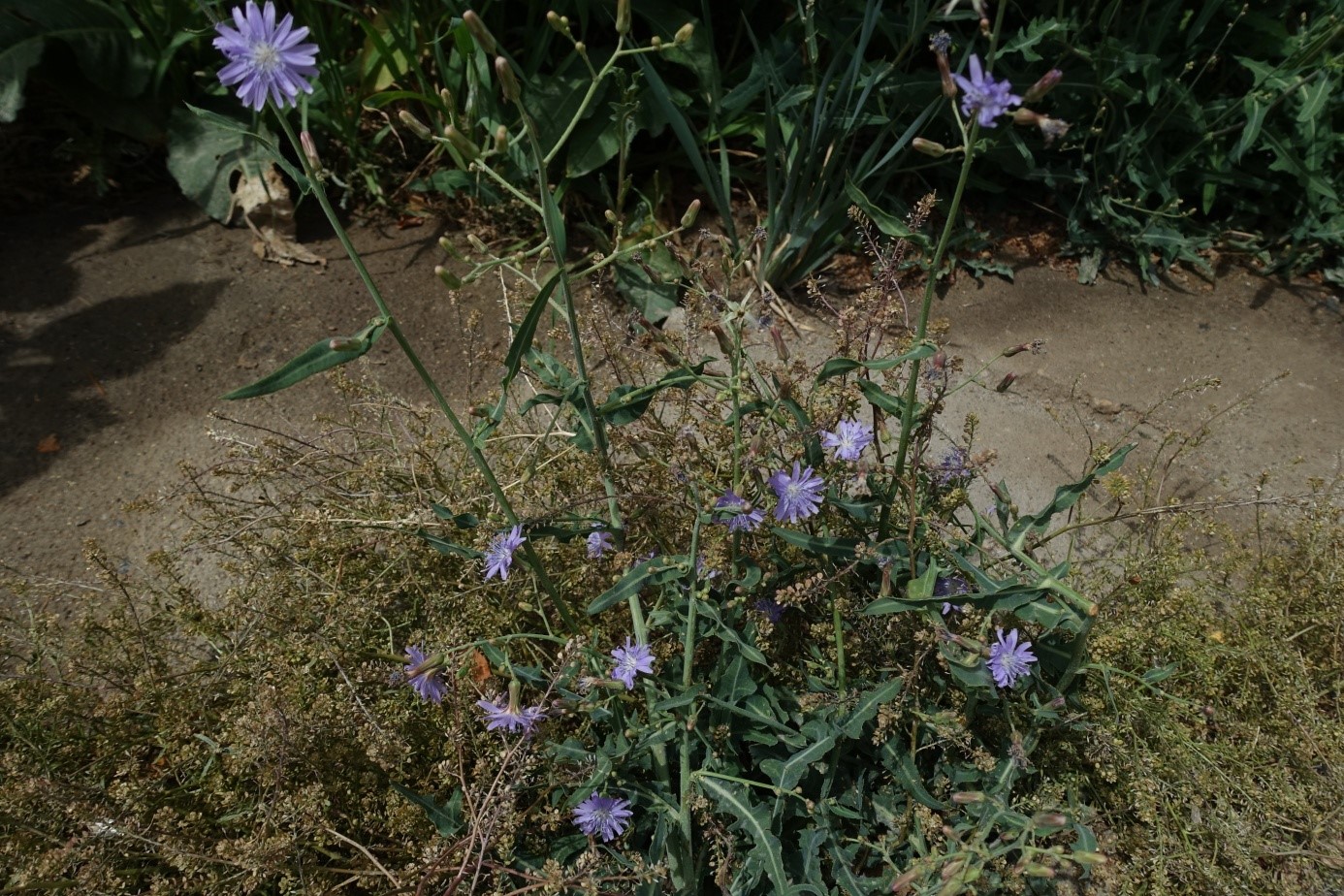
COMPOST
The compost heap is developing fast with the kitchen waste coming in daily. In the last few weeks we had very little woody waste added in. So in order to maintain a good carbon to nitrogen ratio we added two wheelbarrows of sawdust to the heap, spreading it over. I tried to make sure that the staff understands that we need both the leafy soft vegetable waste and the carbon rich woody waste to achieve a balanced good quality compost.
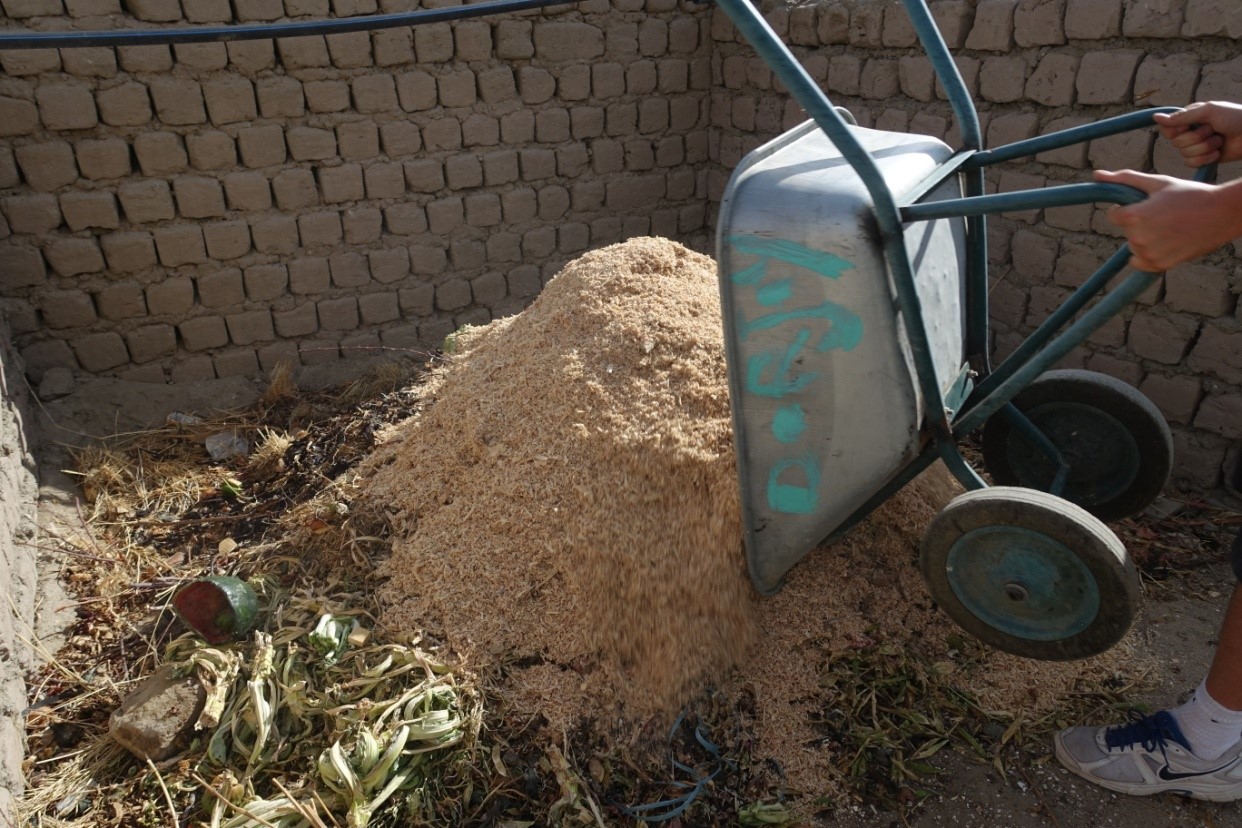
Tree planting and shelterbelt
We started the week with willow planting on the playground area. We planted the two tunnels; at the entrance and near the south wall.
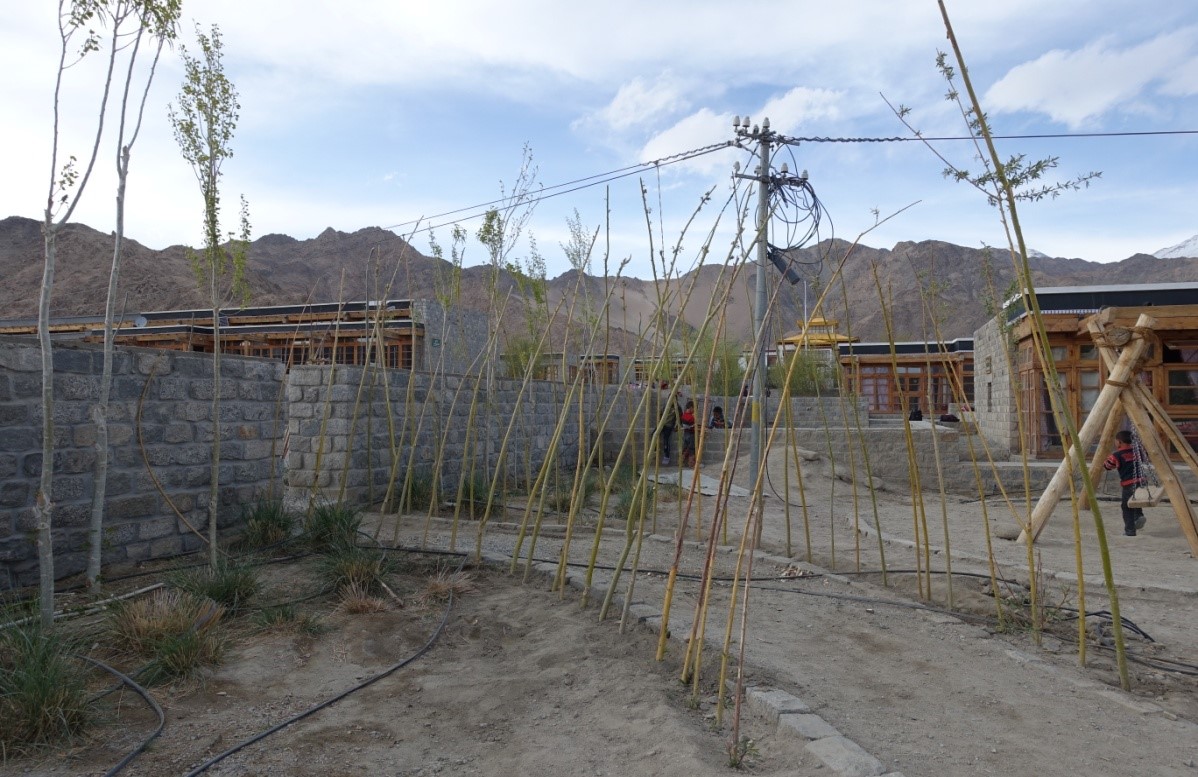
SHELTERBELT
Planting of the first phase of the shelterbelt was completed this week. In the beginning of the week we connected the irrigation system for the shelterbelt area. We started irrigating one day before planting. Angdus arranged the JCB to dig the plants out from his field and went with Tsetan on the small truck to get them on Wednesday. Thanks to the JCB they were all lifted with adequate roots.
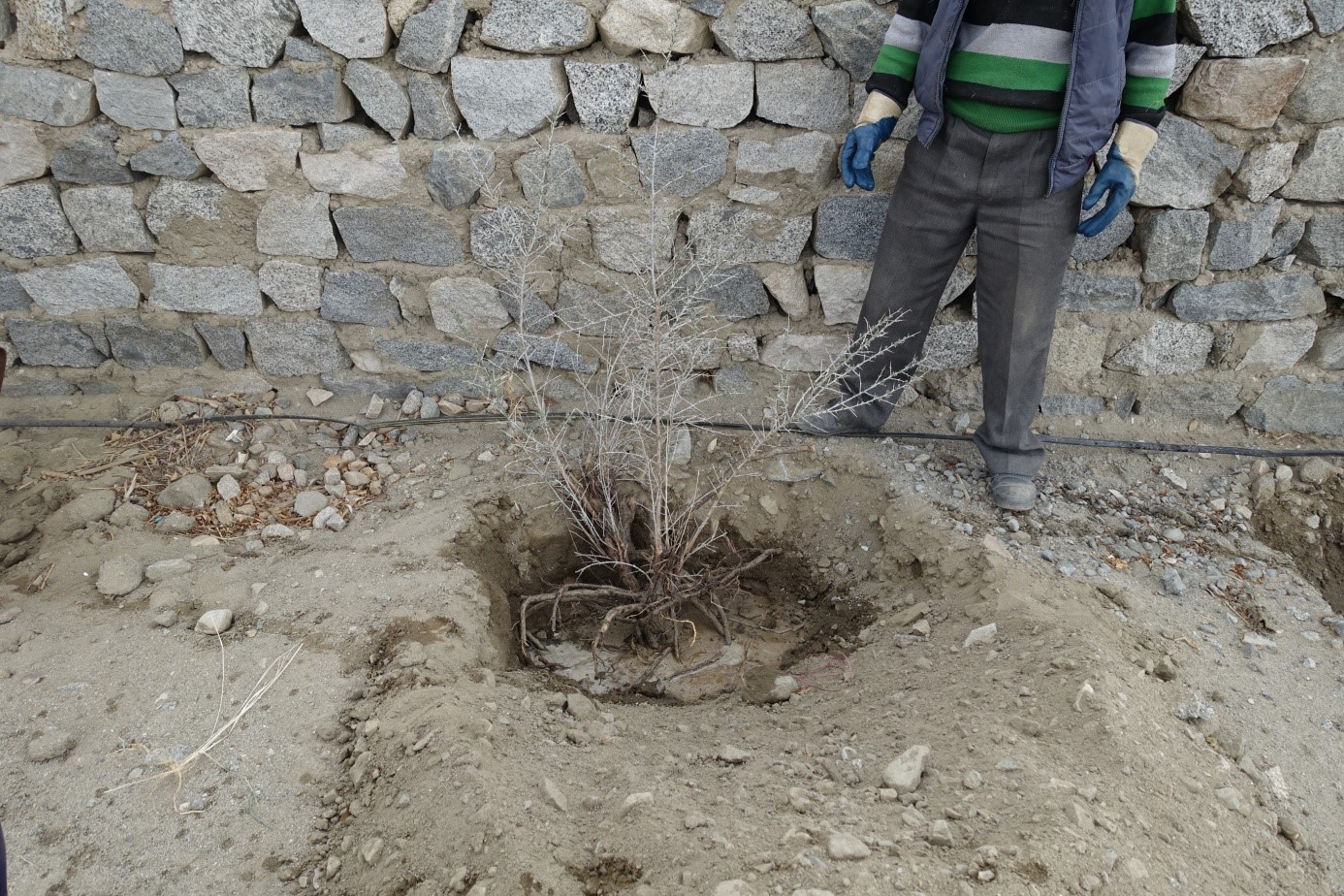
New Resident Landscape Architect
New Resident Landscape Architect Seniz Ocal arrived on 30th March 2015 to continue work on the Dragon Garden.
One of Seniz’s first tasks was to plant the orchard with small apple and apricot trees which had been growing in the nursery. Here are some extracts from her weekly reports:
Our first trial was with manual digging. That was hard and slow despite the labour support. So it was going to be the JCB. The digging was finished by Friday evening. Saturday we moved on with the planting.
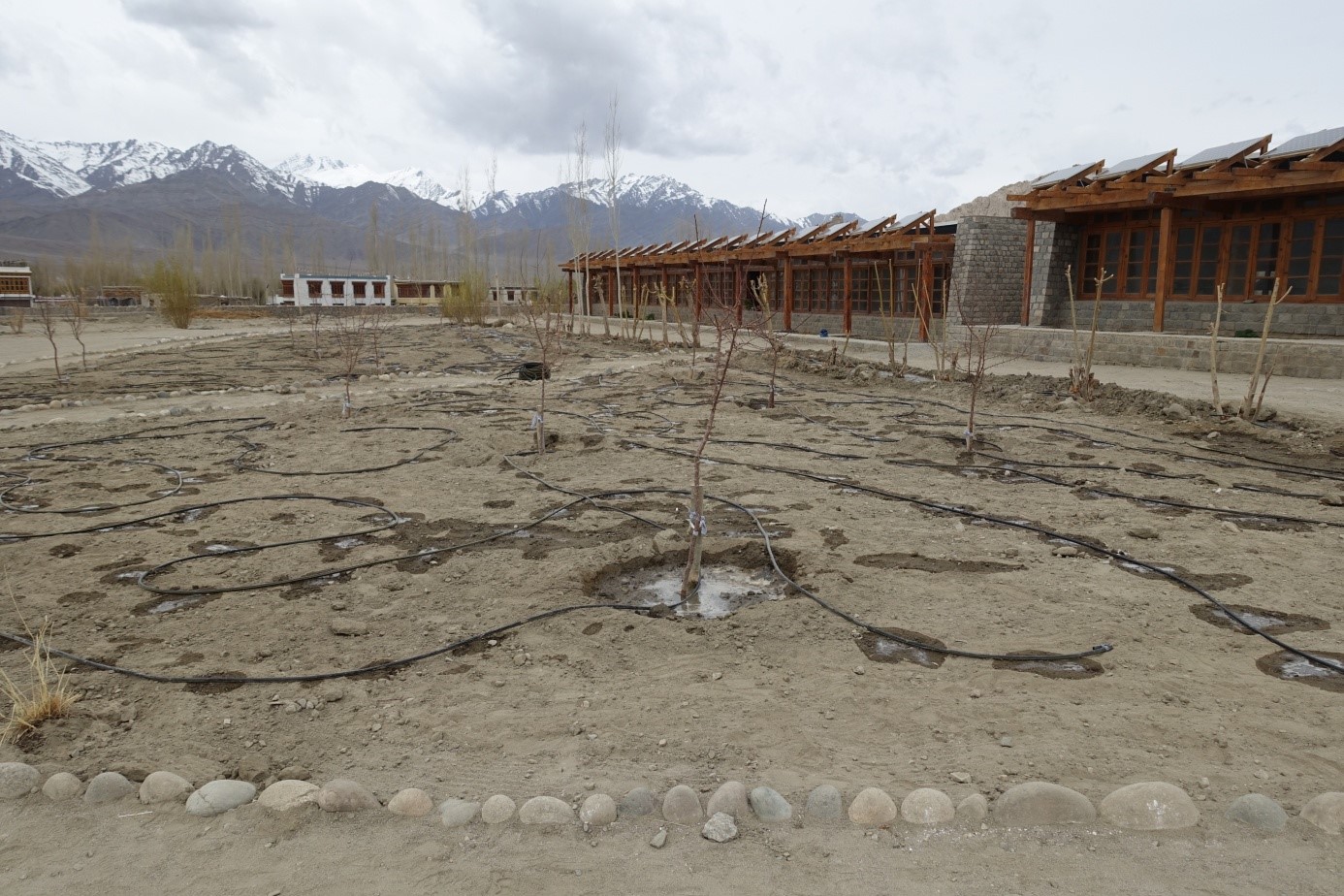
First we prepared a good mix of human waste manure, animal manure and compost in the nursery area to go inside the tree pits. We cut our stake ties out of old garments that we found in storage!
After getting stakes, compost and water ready in the area we went up to the nursery to lift up the trees that were going to be planted, working as a team of seven.
We picked the larger sized trees and the ones with no flower buds, also opening up space for the apples that are going to be planted. The trees in the nursery bays had grown good root mass in the three years they spent there.
The small truck was very handy for carrying the compost bags and the trees to the orchard area.
A total of 13 apple trees and 7 apricot trees were planted. First part of the orchard planting came to an end with the tying of the stakes and watering.
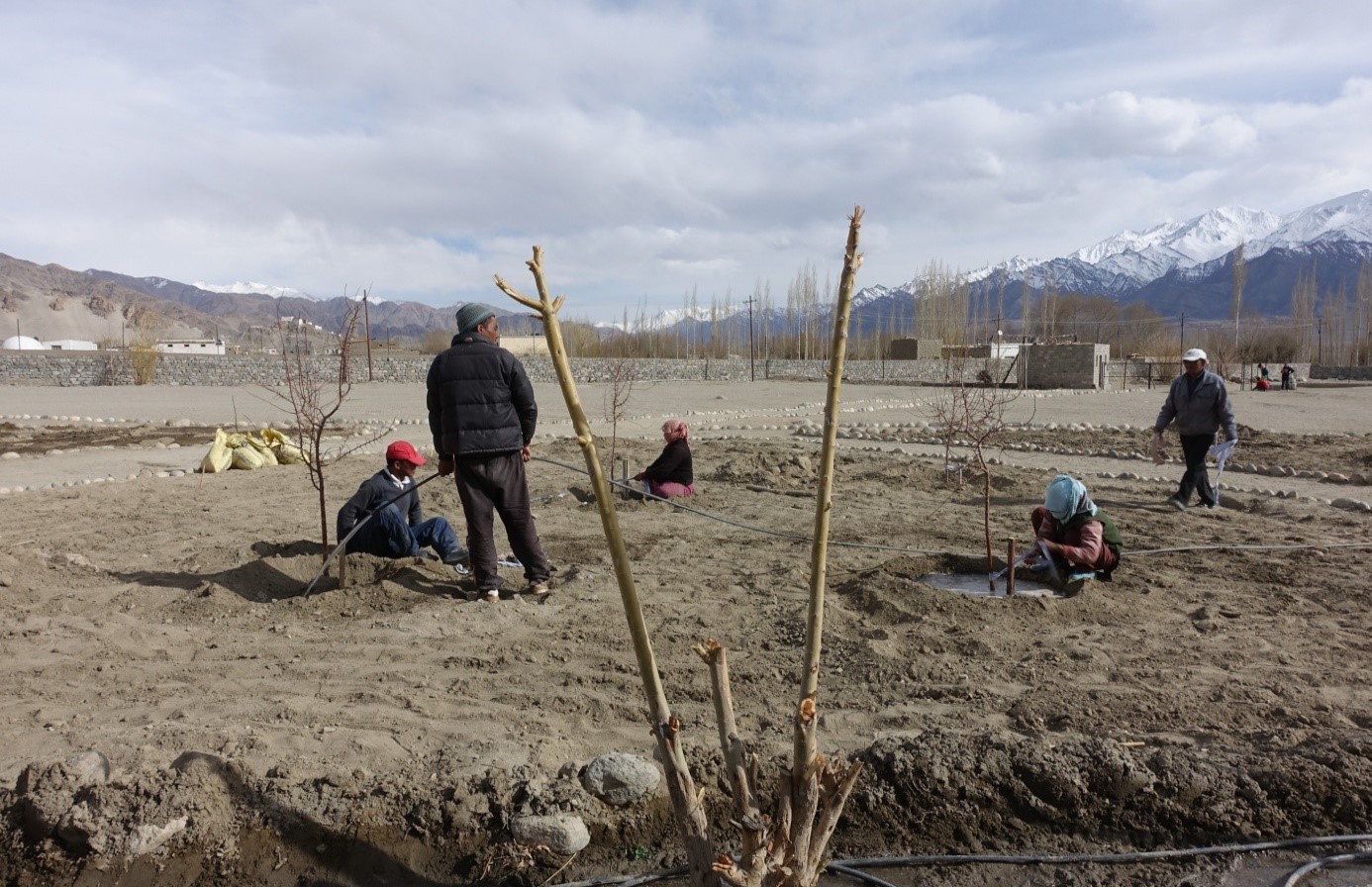
The next day we went ahead with tidying up the orchard. We sowed alfalfa and raked it in. We had plenty of seeds so we were easily able to sow the whole area.
GARDEN COMPETITION
We had our meeting with the vice president and the teaching staff on Monday and decided to officially start the garden competition on 25th April. On Saturday I visited each class, talked about how to proceed and how they will be assessed with the students and teachers. Classes were given the judging criteria for reference. It was good to see the students interested and busy making their gardens.
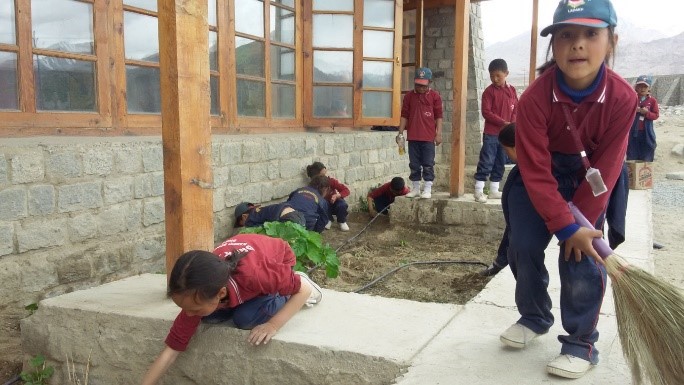
Matriculation Results Class 10 2019
Seismic Upgrade and Mudslide Repair - year 3
Year 3 of the Seismic Upgrade & Mudslide Repair programme started in April 2019 and the construction teams worked through to mid-October, after which it is too cold for construction work.
This year saw refurbishment of the third residence, named Taklangla, out of the eight residential buildings to be done. The teams also completed the second of four new Eco-Shower buildings, plus the completion of the refurbishment of the two-storey Junior School building. The photos here are the Junior School building being completed and a ribbon-cutting ceremony when it was handed back to the school Principal for student use.
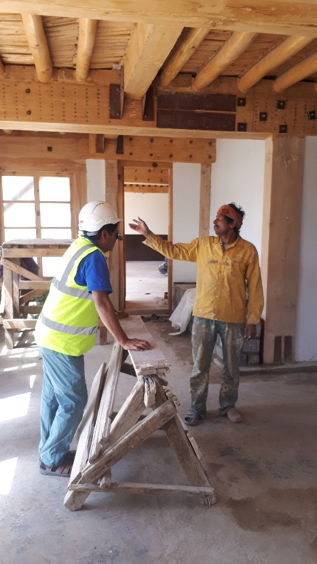
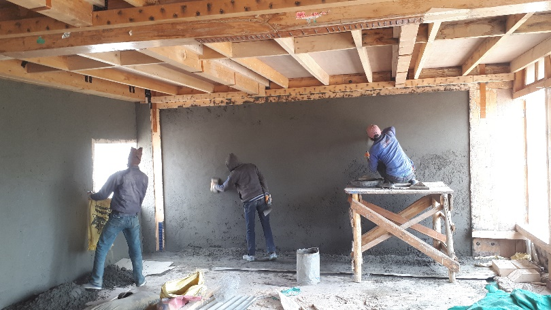
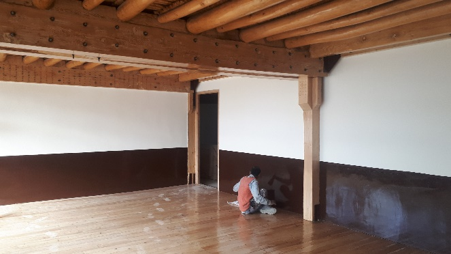
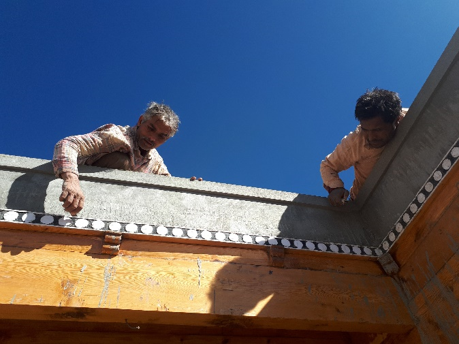
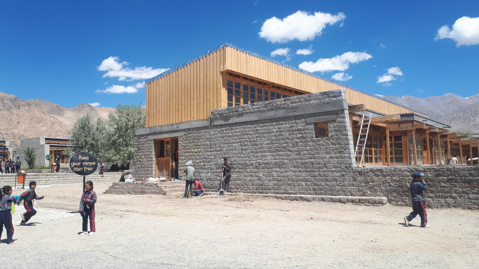
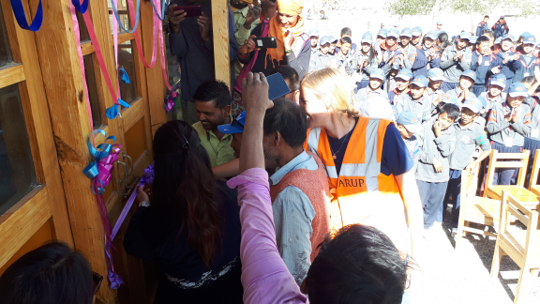
Seismic Upgrade and Mudslide Repair - year 2
In 2018 the Seismic Upgrade & Mudslide Repair programme continued, working on the second of the eight residential buildings to be refurbished and one of the Junior School buildings.
This work might not sound very exciting to you, as you browse through the school website, but it will increase the resilience of the buildings in the event of an earthquake which is critical for the life-safety of the students and staff. The mudslide disaster was eight years ago, but the school is still recovering from this. Funding is needed for this long-term refurbishment programme.
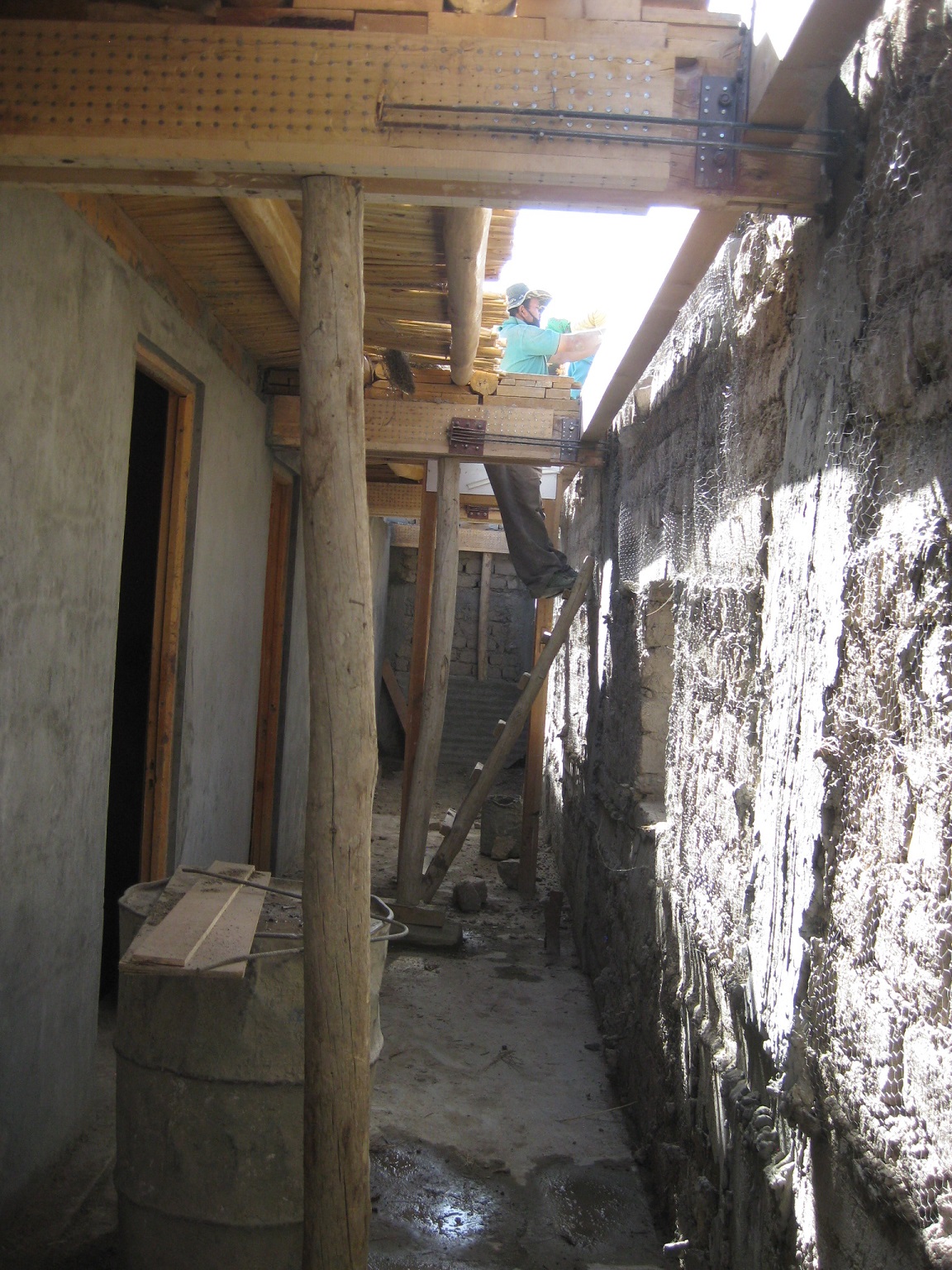
Supplies of timber and insulation in the construction compound.
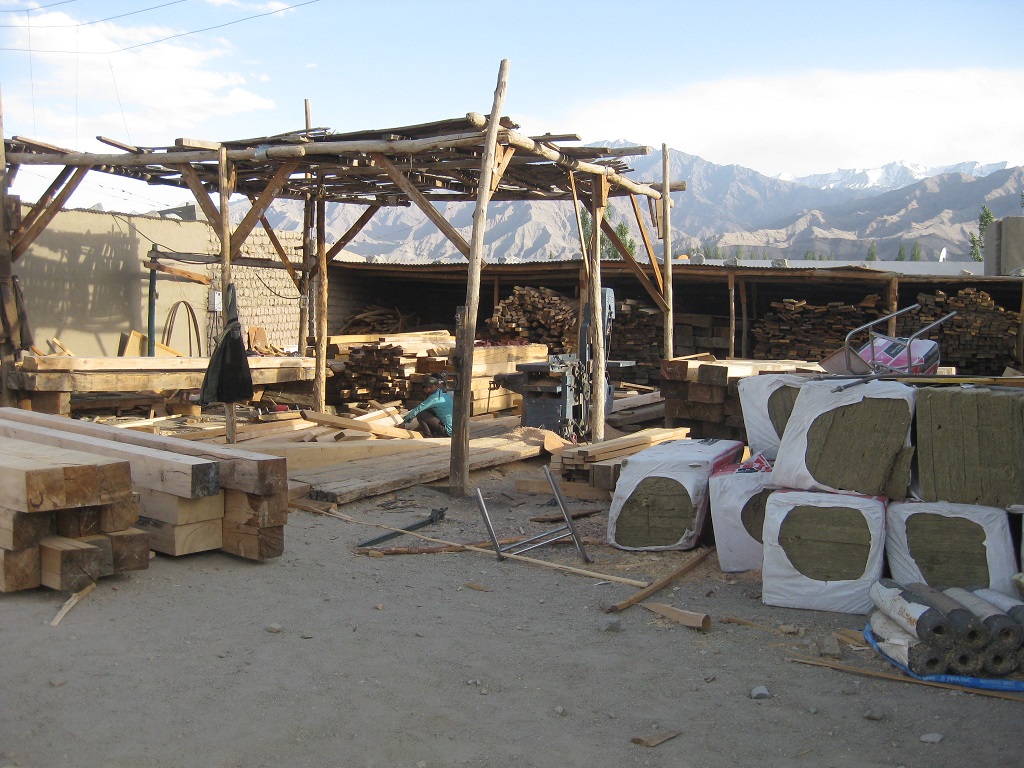
Work also started on the two-year task of the upgrade of the large two-storey 6-classroom Junior School building. The six classes of students were housed in temporary classroom spaces in Naropa Hall, at the top of the school site, that had been partitioned into classroom-sized spaces.
The panorama photo below shows the ground floor of the Junior School, gutted and with new timber supports being added first.

At the end of the construction season in October, the new upper level was covered to protect it from the elements throughout the harsh 3-month winter.
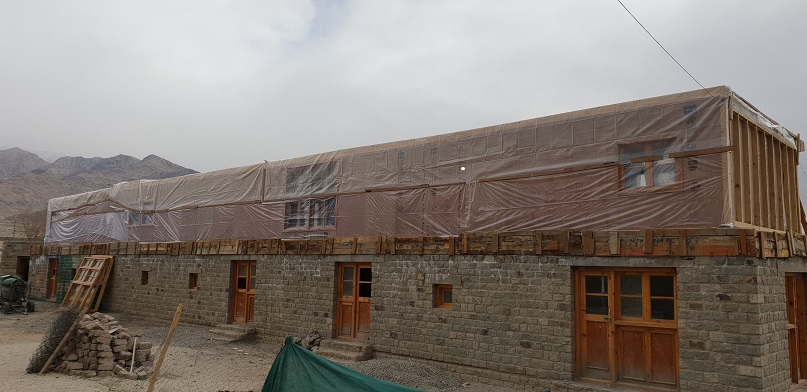
More news from Stuart Taylor
Repairs have begun in the playground with new seats fitted to the existing swing sets and more ordered and on their way.
I went through the plans for the playground with the volunteers from Cambridge and we discussed different options for getting involved in improvements to the space. Volunteers worked on my design for augmenting one of the structures with a cargo climbing net; fortunately the volunteer leader knew how to produce the net and so saved much time in trying to acquire a ready made one. The volunteers also assessed the existing climbing frame from top to bottom, put together by the same organisation in 2009, and spent much time making good and adding new features, including a second cargo net and tyre swing; both of which are very popular with pupils. The playground was given a thorough tidy up with all litter, extraneous items and large stones removed from the surface.
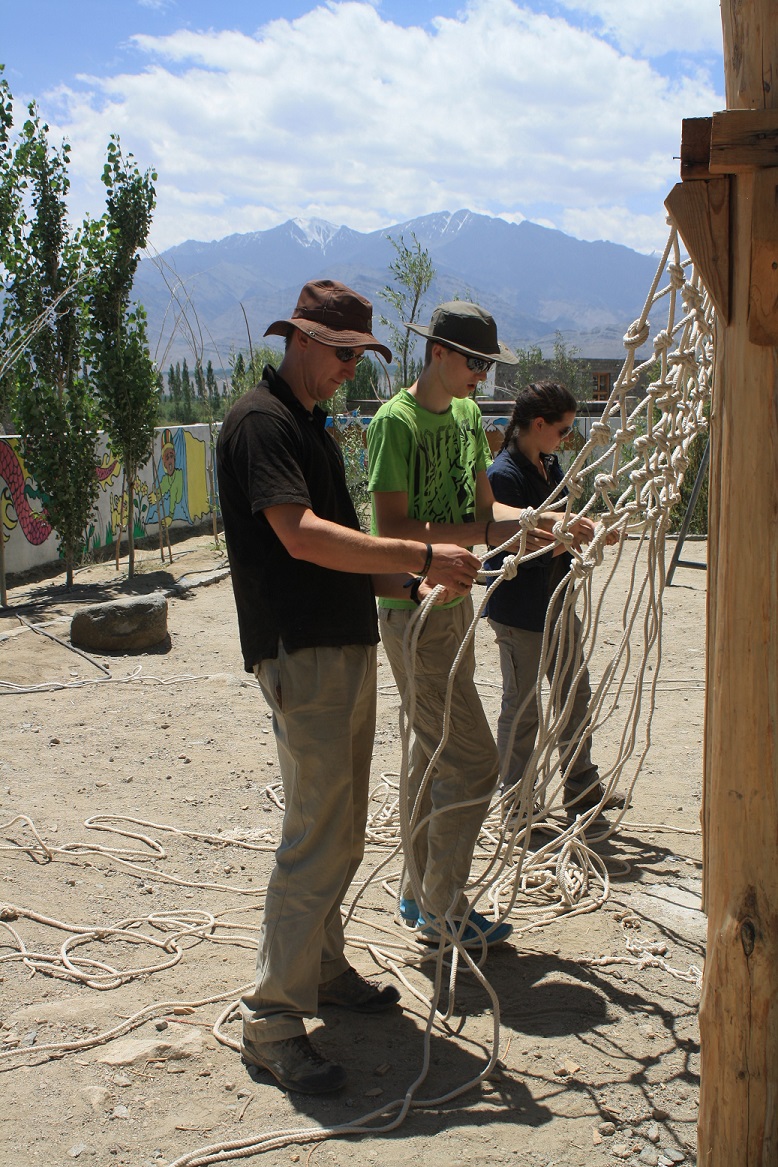
Designs for the entrance path and Outer Ring have been discussed and I am awaiting availability of the JCB and truck to take the river stones to the front of site so I can start setting out with the volunteers from Cambridge next week. I spent some time making logistical arrangements for the volunteers and developing a schedule of work for the them.
Whilst they still need a little work I was pleased with the progress and results from laying out paths to the entrance of the school.
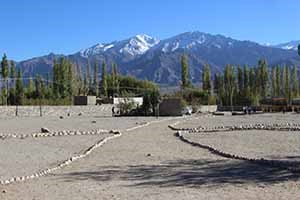
More from Stuart Taylor
The artichokes planted last year have borne fruit and whilst some have been left to seed we set up a temporary kitchen in the landscape office and cooked a number of them with Tsetan and Ritzen to try. They seemed happy with the results and before I knew it had a number others keen to try them too. A number of the artichokes were taken home by the staff so, who knows, it may be more likely to turn up on the local menu.
In the nursery we started to thin some of the higher undergrowth in the orchard beds; two weeks of hot weather coupled with steady water from irrigation and rain resulted in the Alfalfa and Artemisia beginning to compete with the trees for water. As water supply from the irrigation system is still most “challenging” in the nursery the Artemisia was removed and the Alfalfa more selectively thinned and lowered; the latter is nourishing the soil quite effectively and so worthy of selective retention. Other work included harvesting and replanting Coriander, which would appear to be indestructible, and planting on ornamentals from the nursery into the landscape; The beds for the secondary school were prepared and planted with Marigolds and Cosmos. The irrigation laterals were extended to include the bed and it is now covered by the irrigation schedule. The compost pile was also watered and turned and the smaller Alfalfa plants relocated from the nursery to supplement the beds in the landscape.
The site is generally really looking good with much of the planting of previous years, and earlier this year, coming into full bloom and shows the full potential of a well irrigated landscape.
At the weekend I was invited to the school picnic at site by the Indus, which is both idylic and a great example of what can be created to the front of the school with quality planting; I estimate that at mid-day the river combined with the planting lowered to the ambient tempreture by as much as 3-4 degrees so clearly something worth striving for.
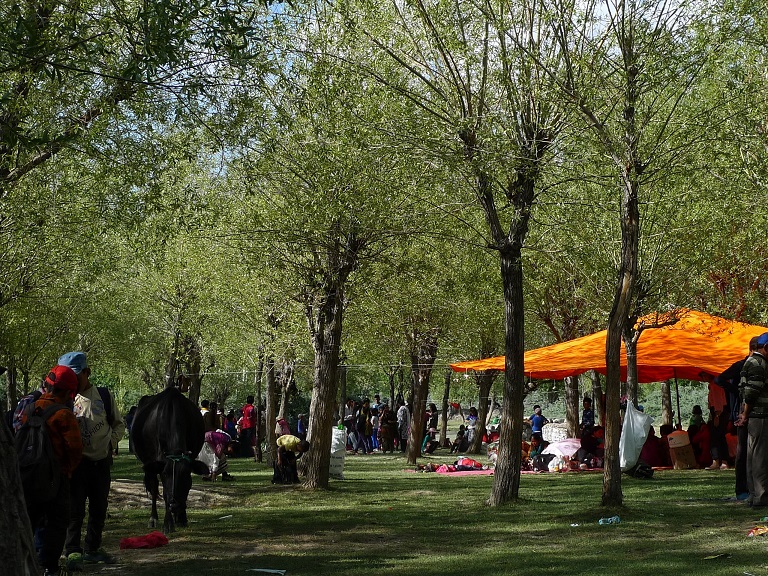
Extracts from Stuart Taylor’s weekly reports
Much of the week, starting on the 24th June, has been spent as “project hand over” from Elaine to me and this offered the opportunity for me to familiarise myself with the site and landscape, as well as meeting key people at The School. I am really impressed with what has been achieved so far on site and very much hope to be able to continue the good work.
I have been briefed on Elaine's designs for the residential courtyards, Zojila/Khardongla House (Courtyard 1) and Warila/Penzila House (Courtyard 3) and we have had a refresher meeting with Angdus to ensure these remain on the schedule of works for the next couple of months. The courtyards are easier to identify since the arrival of some rather smart signs in time for the opening of the Ladakh International Film Festival at the school.
Republic Day 26 January 2020
It is a day to remember when India's constitution came into force on January 26, 1950, completing the country's transition toward becoming an independent republic.
Republic Day represents the true spirit of the independent India. Military parades, displays of military equipment and the national flag are important symbols on this date. India's national flag is a horizontal tricolor of deep saffron (kesaria) at the top, white in the middle and dark green at the bottom in equal proportion.
Thanks to the teachers and students for believing in yourself and giving their 100%. You all deserve it! I congratulate you all on behalf of our DPKS Family. Bravo and you guys nailed it. 1st position in march-past (parade) and 3rd position in cultural perfomance. Here is a glimpse of this very special day.
